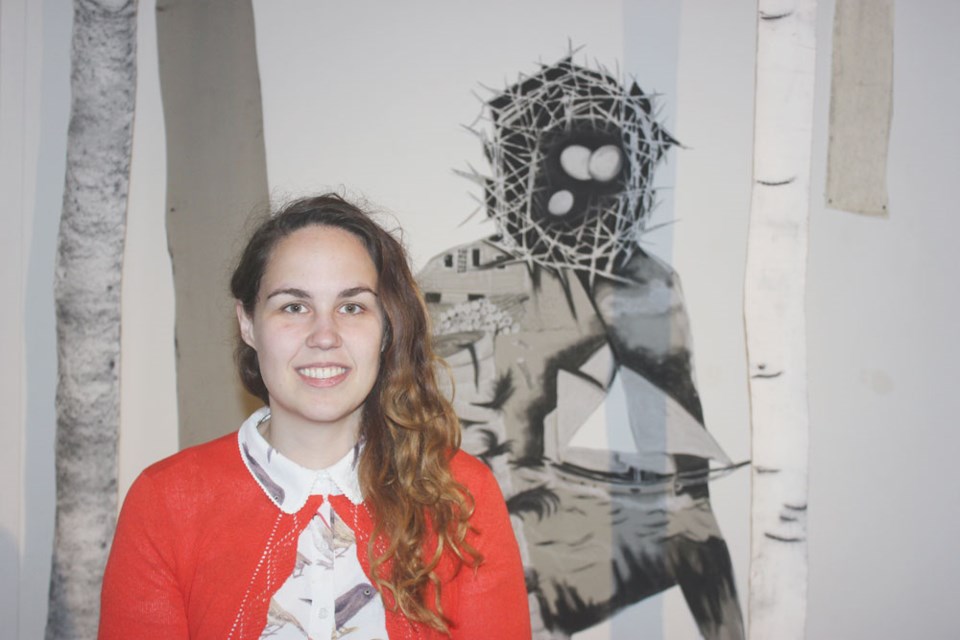A new exhibit at the Estevan Art Gallery and Museum (EAGM) reflects the personal journeys through depression and anxiety for the artist.
Robyn Anderson’s Nature and Other Terrible Things is on display inside Gallery No. 2. She describes it as a dark look at nature, looking at anxiety-causing uncertainties in relationships, both among people and with nature.
Through it, she wants to explore the uncertainty of what is bad in nature, not just in the literal sense, but with human nature.
The concept of The Black Sun, which deals with the negatives in life and how they are necessary, plays a key role in the inspiration for the exhibit, she said.
“I do deal a lot with masks, and the strength that comes from masks, but also the weakness that comes from masks, and the fact that we put masks on when we go into public,” said Anderson.
Masks can be used to hide identities, commit crimes or survive the winter, she said.
But she also said the title is ironic.
“I was thinking about the nature of nature,” said Anderson. “I talk a lot about dichotomies, and we forget how terrible nature can be, and often times it can’t terrible anymore.”
She asked the audience when they have been out in the wilderness, and unable to contact anyone or be rescued, because people now have cellular phones and it can be easier to locate them. But if they do find themselves stranded in nature, it can be a really terrible thing.
There are a lot of darks and lights in the exhibit, but also a lot of grey. The figures in the exhibit, such as the wolf, become grey, and so it’s hard to tell who is good and who is evil.
The domestic doilies in the exhibit are influenced by her family, so they become hard to react to.
“The first ones are based on my grandmother’s doilies,” said Anderson. “And I took the small doily and made it huge. And so it went from something very delicate and very tiny and feminine, to something huge and cumbersome and masculine.”
Anderson’s battles with depression and anxiety play a key role in the exhibit. She had her first panic attack when she was 13 years old, and it left her crying and gasping.
“There was some talk about mental health (back then), but I think the focus was more towards depression, whereas I find that now, people are more aware of anxiety, just because we lead such stressful, stressful lives,” she said.
Anderson battled anxiety early in her 20s, when she didn’t know what she wanted to do with her life. At one point, she went weeks without going outside.
She showed a performance piece called Sink Fast or Learn to Swim, in which she attached a cinder block to her body and entered a small pond.
“I was trying to understand and trying to work through the fact that I had no idea what I was doing with my life,” said Anderson.
She also wasn’t willing to talk to people about the struggle she was going through, but she could express herself artistically.
At the time, the idea of speaking in front of a crowd at a reception at an art gallery, and explaining her work, would have been unbearable.
“Being able to actually tell someone I was going through this was one of the toughest parts of my life, but my life at that point was almost unliveable, because I wasn’t able to leave my apartment, and I was crying constantly,” said Anderson.
This is the third time Anderson has shown the exhibit in a gallery setting, and she was pleased with how it turned out. The EAGM employees were helpful with the setup.
Anderson is the visual arts co-ordinator at the Rotary Arts Centre, and has a master’s degree in visual arts from the University of Saskatchewan.
Nature and Other Terrible Things will remain on display until Oct. 27.




